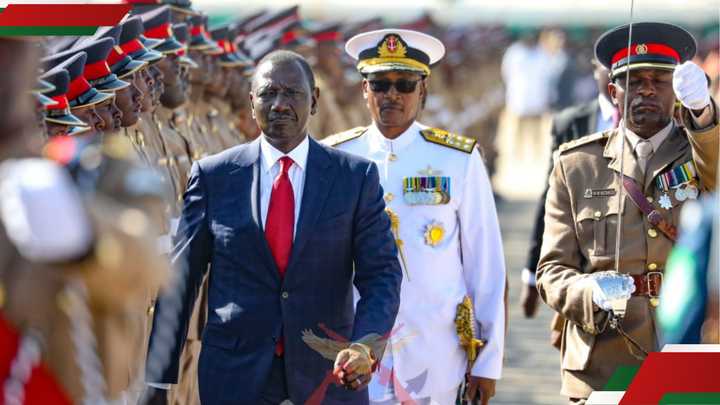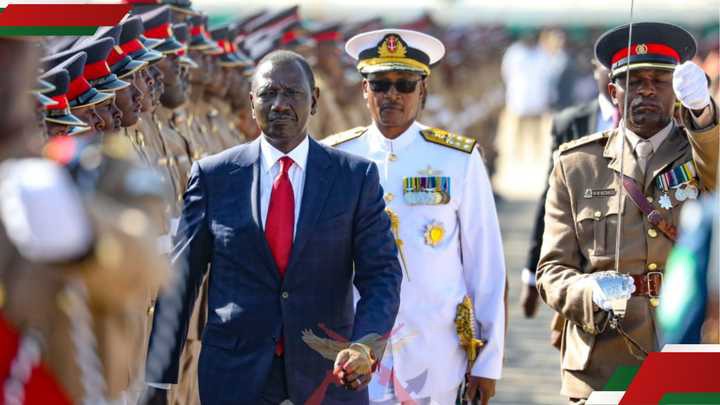This year’s Madaraka Day celebrations are more than a ceremonial event—they’re a milestone in Kenya’s ongoing journey to decentralise national pride and power.
Search option is now available at TUKO! Feel free to search the content on topics/people you enjoy reading about in the top right corner 😉

As Homa Bay County prepares to host the 61st Madaraka Day on June 1st, the lakeside region is undergoing a rapid transformation, both in infrastructure and national attention.
The decision to rotate national celebrations beyond Nairobi has become a powerful catalyst for development in counties across the country.
From Bungoma to Embu, Kericho to Kwale, the impact of hosting these events has left behind more than memories—it has built roads, upgraded stadiums, created jobs, and elevated local pride.
Now, it’s Homa Bay’s turn in the spotlight.
Search option is now available at TUKO! Feel free to search the content on topics/people you enjoy reading about in the top right corner 😉
“This is our chance to showcase the beauty and diversity of Homa Bay to the entire nation,” said Governor Gladys Wanga, whose administration oversees a whirlwind of upgrades ahead of the celebrations.
At the centre of these preparations is the Raila Odinga Stadium, undergoing a Sh500 million expansion that will boost its capacity tenfold—from 2,000 to 20,000 seats.
The overhaul includes modern terraces and improved amenities, setting the stage for not just Madaraka Day but future sporting and cultural events.
Elsewhere, the Kabunde Airstrip is being expanded to accommodate larger aircraft, while the Homa Bay highway is receiving long-overdue upgrades.
The investments are expected to boost connectivity, tourism, and commerce in a county known for its fertile farmlands, rich fishing grounds, and scenic spots like Ruma National Park and Mfangano Island.
With over 1.1 million residents, Homa Bay’s economy leans heavily on small-scale agriculture and fishing.
Governor Wanga is optimistic that the celebrations will deliver a significant economic shot in the arm.
“Local businesses will thrive, and we anticipate creating numerous temporary job opportunities, especially for our youth and women,” she said.
Beyond economic benefits, the event will be a chance for the region to celebrate and share its cultural wealth—music, food, traditional crafts, and more—with the rest of the country.
A national vision, a local impact
The National Celebrations Steering Committee, chaired by Internal Security Principal Secretary Dr. Raymond Omollo, has been instrumental in helping counties host national days.
According to Omollo, the initiative is about more than logistics—it’s about building unity through shared experience.
“These festivities not only honor our heritage but also practically promote a sense of community and national pride,” he said.
“The infrastructural upgrades, economic stimulus, and national visibility that accompany hosting such an event will leave a lasting impact.”
The benefits are evident in the counties that have hosted past celebrations.
In Bungoma, last year’s Madaraka Day focused on agriculture and food security. Over 200,000 farmers were registered for subsidised inputs as part of a broader push to boost productivity.
Kericho, which hosted the 2023 Mashujaa Day, saw the rollout of Universal Health Care (UHC).
The town received a new-look stadium, expanded roads, and improved public utilities.
In Embu, Madaraka Day in 2022 spurred stadium upgrades and major roadworks. It also laid the groundwork for a sports complex at Njukiri Grounds.
Each celebration is themed—Embu’s focused on affordable housing, Kericho’s on healthcare, and Bungoma’s on food security—tying national policy goals to county-level transformation.
This year, President William Ruto is expected to inaugurate several key projects in Homa Bay, including affordable housing units, improved fish landing sites, and the long-awaited rehabilitation of the Homa Bay pier.
“These events allow communities that have never had the opportunity to host national celebrations to finally interact with national leadership and be seen as vital to Kenya’s story,” said Omollo.
More than a ceremony
In a country where national days were once the preserve of Nairobi’s elite, this shift to a devolved approach has become a quiet revolution in building inclusivity.
For counties like Homa Bay, it means more than pomp and pageantry—it’s a chance to reframe the narrative.
“This celebration is not just a moment in time; it is a step towards a brighter future for Homa Bay. And for Kenya, it’s a moment to reaffirm the values that Madaraka Day stands for—freedom, self-determination, and the promise of shared prosperity,” he said.
Source: TUKO.co.ke
